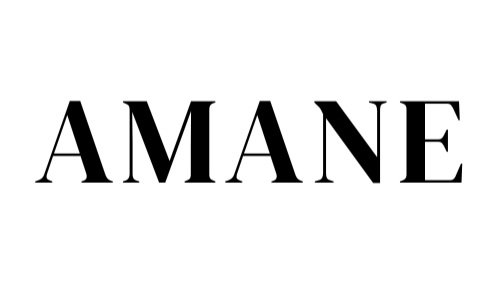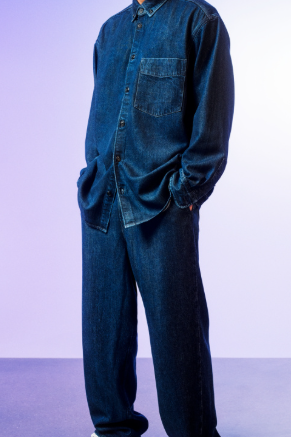Why Big Brands Like H&M and Mango Are Partnering with Circulose
When global fashion players such as H&M Group and Mango announce new partnerships, it is worth paying attention. Their recent multi‑year agreements with Circulose - the rebranded and relaunched successor to Renewcell - signal a meaningful shift in how large-scale fashion approaches materials and supply chain responsibility.
Circulose transforms cotton waste, including worn-out garments and factory scraps, into new dissolving pulp. This pulp can be re-spun into viscose, lyocell, and other regenerated fibers, offering a recycled-path alternative to traditional wood-based man-made cellulosic fibers (MMCF). The process not only repurposes waste but also circumvents the deforestation and chemical processing tied to typical MMCF production. That alone makes Circulose a compelling solution.
In June 2025, Circulose relaunched following debt restructuring. Among its first partnerships under new leadership are deals with H&M Group and Mango. The H&M agreement commits to replacing a "substantial share" of virgin viscose with Circulose pulp across its many brands – H&M, COS, Weekday, and & Other Stories - as part of its larger goal to use 100 % recycled or sustainably sourced materials by 2030. Mango’s deal is similarly scoped: it will integrate Circulose pulp into its fiber mix to enhance its supply chain circularity.
These agreements are more than symbolic. Circulose’s previous bankruptcy in early 2024 highlighted the fragility of next‑gen material ventures without sufficient demand. The relaunch includes a new pricing model based on licensing, allowing brands access to Circulose at prices close to virgin viscose or cotton, if they commit to volume and collaboration. In parallel, the company has launched Circulose Forward, a platform co-developed with nonprofit Canopy, providing brands with tools to integrate the material into their supply chains, calculate costs, and connect with capable suppliers.
For H&M, Circulose represents a concrete step toward its 2030 sustainability ambition. Cecilia Strömblad Brännsten, the company’s head of resource use and circularity, remarks that these partnerships are essential to scaling solutions that support the circular economy. Mango echoes that sentiment: Andrés Fernández, its sustainability director, states that this collaboration is a key milestone in its commitment to reducing the environmental impact of its fiber use by 2030. This moment feels different from past announcements. Circulose’s restructured model prioritizes long‑term brand partnerships with alignment on volume, pricing, and integration support—unlike its previous iteration as Renewcell, which struggled to scale due to lack of consistent brand uptake. Former H&M CEO Helena Helmersson, now chair of Circulose’s board, emphasizes that the new approach combines pricing predictability with supply chain coordination - a critical factor for large-scale adoption.
This shift in industrial strategy places Circulose and its partners in a stronger position to deliver real change. Their collaboration reflects a form of supply chain transparency that reaches beyond final products - building value from ramping use of recycled feedstocks, reshaping fiber mixes in large collections, and helping ensure that innovations in materials become tangible on store racks.
What it Means for Consumers
These developments are important not just for the fashion industry but also for mindful shoppers. When major brands invest in recycled pulp fibers like Circulose, they create a pipeline for sustainable materials that can one day reach everyday garments. This transforms abstract goals of circularity into garments with lower environmental impact and greater traceability.
In a world where most cellulosic fabrics come from wood-based pulp, switching to recycled cotton pulp represents not only a technical innovation but a step toward closing the loop. If these partnerships remain strong and production restarts in 2026 as expected, consumers may soon see more viscose or lyocell garments carrying recycled narratives, and with less reliance on deforestation or virgin resource extraction.
These within-industry shifts demonstrate how transparency can begin upstream, not just at the register. By integrating regenerated materials into their sourcing pipelines, brands show that responsibility can be systemic - NOT peripheral.
SOURCES
Vogue Business. “H&M Group inks multi-year deal with Circulose.”
https://www.voguebusiness.com/story/sustainability/handm-group-inks-multi-year-deal-with-circulose
Vogue Business. “Why former H&M CEO Helena Helmersson joined Circulose.”
https://www.voguebusiness.com/story/sustainability/why-former-handm-ceo-helena-helmersson-joined-circulose-renewcell
Green Queen. “Circulose Forward: H&M and Mango Back Sustainable Pulp Innovation.”
https://www.greenqueen.com.hk/circulose-forward-hm-mango-pulp-sustainable-fashion/
Mango Fashion Group. “Mango collaborates with Circulose to drive textile circularity.”
https://www.mangofashiongroup.com/en/w/mango-avanza-en-sostenibilidad-a-trav%C3%A9s-de-su-colaboraci%C3%B3n-con-circulose-para-impulsar-la-circularidad-textil
Fashion Dive. “H&M signs multi-year deal with Circulose to boost circular materials.”
https://www.fashiondive.com/news/hm-circulose-multi-year-partnership-recycled/752079/


